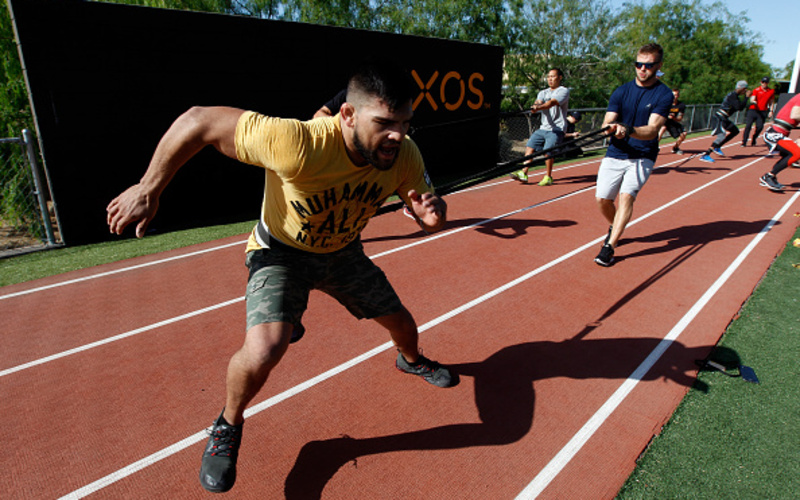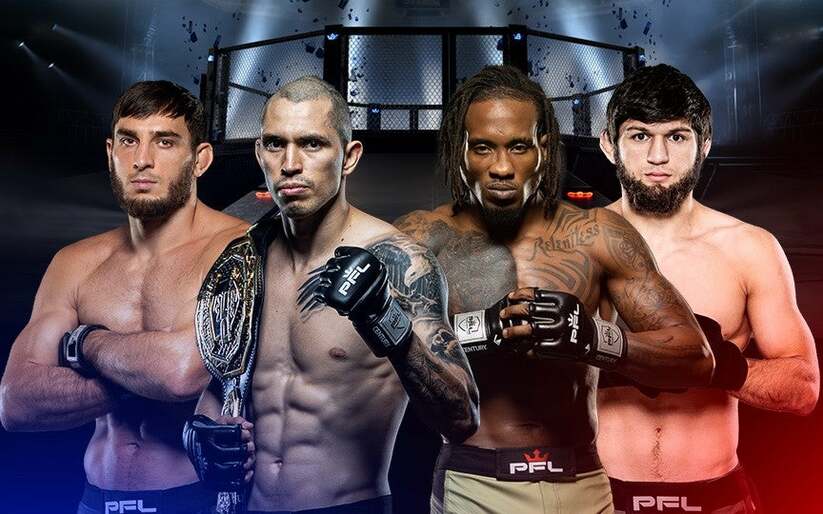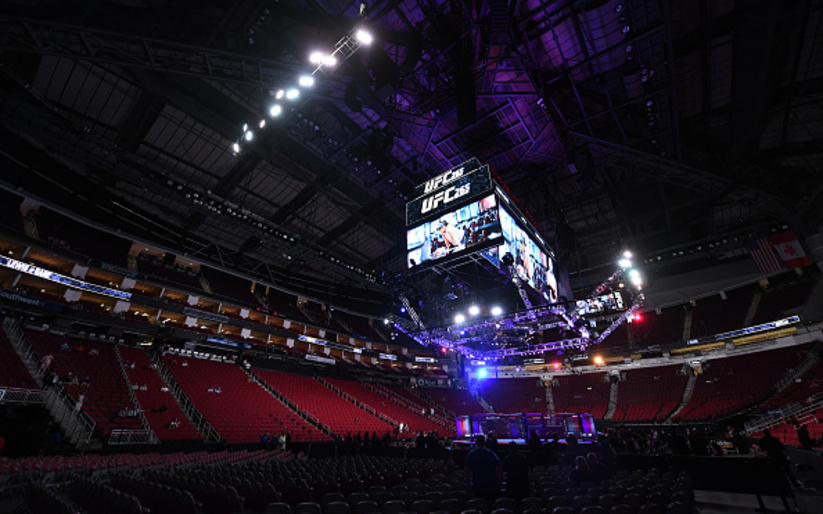Mixed Martial Arts (MMA) itself is a form of cross-training. It combines the training methods of different martial arts to prepare for situations on your feet, in the clinch or on the ground. Through my years of competition, various forms of cross-training for MMA have benefited my overall fighting game. I’m not the only one. Plenty of fighters over the years have tried a wide variety of exercises, sometimes even crossing over from other professional sports. Cross-training in other disciplines helps develop new skills that can be applied to martial arts competition.
The physical and mental benefits of cross-training are endless. Learning new things prevents the over thinking and over training that occurs during vigorous MMA workouts. Working on a certain aspect of your game obsessively can easily overthink you into a brick wall. Your mind will stop absorbing information as your body breaks down from overuse. Getting involved in other activities allows your “ninja thoughts” to settle, while keeping your body moving, recovering and growing.
Through my years of competition, various forms of cross-training for MMA have benefited my overall fighting game
There are many ways outside of combat sports to help maximize your fighting skills. Running is probably the most common form of cross-training used by athletes. Cycling and swimming are also great ways to increase aerobic stamina.
One of the best examples in MMA are the Diaz brothers. They have been competing in marathons, triathlons & cycling competitions for years. Any hardcore fight fan knows that Nick competed in a swimming race to shore from Alcatraz. When you combine their world-class technique with world-class endurance, the outcome is impressive. Diaz fights usually involve their opponents wilting to a triathlon-style pace. Improving cardio isn’t the only thing fighters have done through cross-training.
Anderson Silva and Vasyl Lomachenko are two legendary strikers known for their incredible footwork. The pairs greatest performances almost look like dance routines they’re leading. While putting in the hours at their respective gyms plays a huge part, both have given credit to their love of dancing.
Cross-Training for MMA
Lomachenko’s father removed him from boxing at the age of nine to practice ballet exclusively. After four years of dancing, crossed with gymnastics, he believed Vasyl had developed the appropriate footwork to resume boxing. The results speak for themselves:
- 396-1 as an amateur
- 10-1 as a pro
- 2-time olympic gold medalist
For years Anderson Silva seemed untouchable. He used his footwork to effortlessly dance circles around the scariest men on Earth. Michael Page, Genki Sudo and Paige VanZant are just a few more notable strikers who have used rhythm as an advantage on the feet. Any good stand-up fighter will tell you that striking of any kind is all about rhythm and timing. Dancing is all about rhythm and timing. Seems their might be some correlation.
Some fighters don’t just try other forms of cross-training, many got their start in other sports. Jose Aldo started his journey as an athlete playing soccer and practicing Capoeira. Capoeira is a Brazilian martial art that combines dancing, acrobatics, and striking.
Learning new things prevents the over thinking and over training that occurs during vigorous MMA workouts
In any Aldo fight, it’s easy to notice his kicking power and explosive athleticism. During his five round fights he was able to maintain his speed and explosiveness in the later rounds. Capoeira requires a person to be extremely athletic, whereas soccer requires high aerobic endurance. Combining these attributes with his fighting abilities turned Aldo into the greatest featherweight fighter of this era.
A number of professional and college football players have transitioned into MMA over the years. Matt Mitrione, Brendan Schaub, and even Herschel Walker have enjoyed success in the cage. While it always requires some level of skill as a fighter to win fights, it’s hard to ignore the physical advantages football players have. The speed, agility, toughness and overall physicality developed from such a rough sport like football melts right into the MMA pot.
Pro wrestlers Bobby Lashley and Brock Lesnar crossed over into MMA. Everyone knows in the world of pro wrestling you have to be strong, physical & durable. I’ve never seen them hit a suplex from the top of an MMA cage, but I do remember their strength and toughness helping them win fights.
Some fighters don’t just try other forms of cross-training, many got their start in other sports
Aside from being physical specimens, they were used to performing in front of large, emotional crowds on a weekly basis. This made them able to handle the nerves that come with fighting in MMA’s big leagues. Their overall success in pro wrestling helped these two rise in the ranks faster than most fighters taking a conventional route. Whether it be pro wrestling or ping pong, probably more than half of all martial artists started with other sports before stepping onto the mat.
Over my 27 years of existence, I’ve tried various sports. After playing soccer for seven years, I began gravitating towards “extreme sports” in my pre-teen years. I was no Donald Cerrone, riding ATVs and dirt bikes like a mad man. Cerrone goes wake-boarding, rock climbing and diving. Sometimes during the week of a fight. My addiction to adrenaline was never that extreme.
Balance, flexibility, joint stability, increased focus & lung capacity are just a few things I’ve improved through yoga
Skateboarding and surfing were at the top of my list. The first thing I gained from board-sports was the ability to balance using my entire body. Not only are you balancing, you’re in a staggered stance similar to boxing or kickboxing. Surfing also taught me how to stay calm under pressure. When the ocean is churning, your breathing becomes limited while your heart rate skyrockets. The first few times I was crushed and choked by my grappling coach, I was surprisingly relaxed about it. Being rag-dolled underwater, paddling to stay free of a rip current feels very similar to doing jiu jitsu. On the flip side, plenty of professional surfers cross-train in the grappling arts. Today I only surf or skateboard for fun when I have time.
My favorite way to cross-train for MMA is practicing yoga. I prefer Bikram and Yin yoga, but there are plenty of styles to choose from. Spending time on a yoga mat helps keep me off the operating table. Practicing yoga stretches and strengthens overused muscles. It also targets smaller muscles around your joints, ligaments and tendons that don’t get used often. This stabilizes sensitive areas like a knee or shoulder, which protects them during hard workouts on the mat. Balance, flexibility, joint stability, increased focus and lung capacity are just a few things I’ve improved through yoga. Overall, yoga has been the best recovery tool for my body and has helped me improve athletically.
My favorite way to cross-train for MMA is practicing yoga
It’s hard to scratch the surface on how many ways there are to cross-train for MMA. Surfing, dancing, pro wrestling or sacking quarterbacks might help on the quest to be a better fighter. It might not. It comes down to whether the individual is smart enough to take skills from one thing and apply them to another properly. If you feel your martial arts skills are becoming stagnant, cross-training might be an option to pull you out of the mud and get you growing again. Take your pick; there’s a whole field of opportunity to choose from.
Main Photo:
Embed from Getty Images



